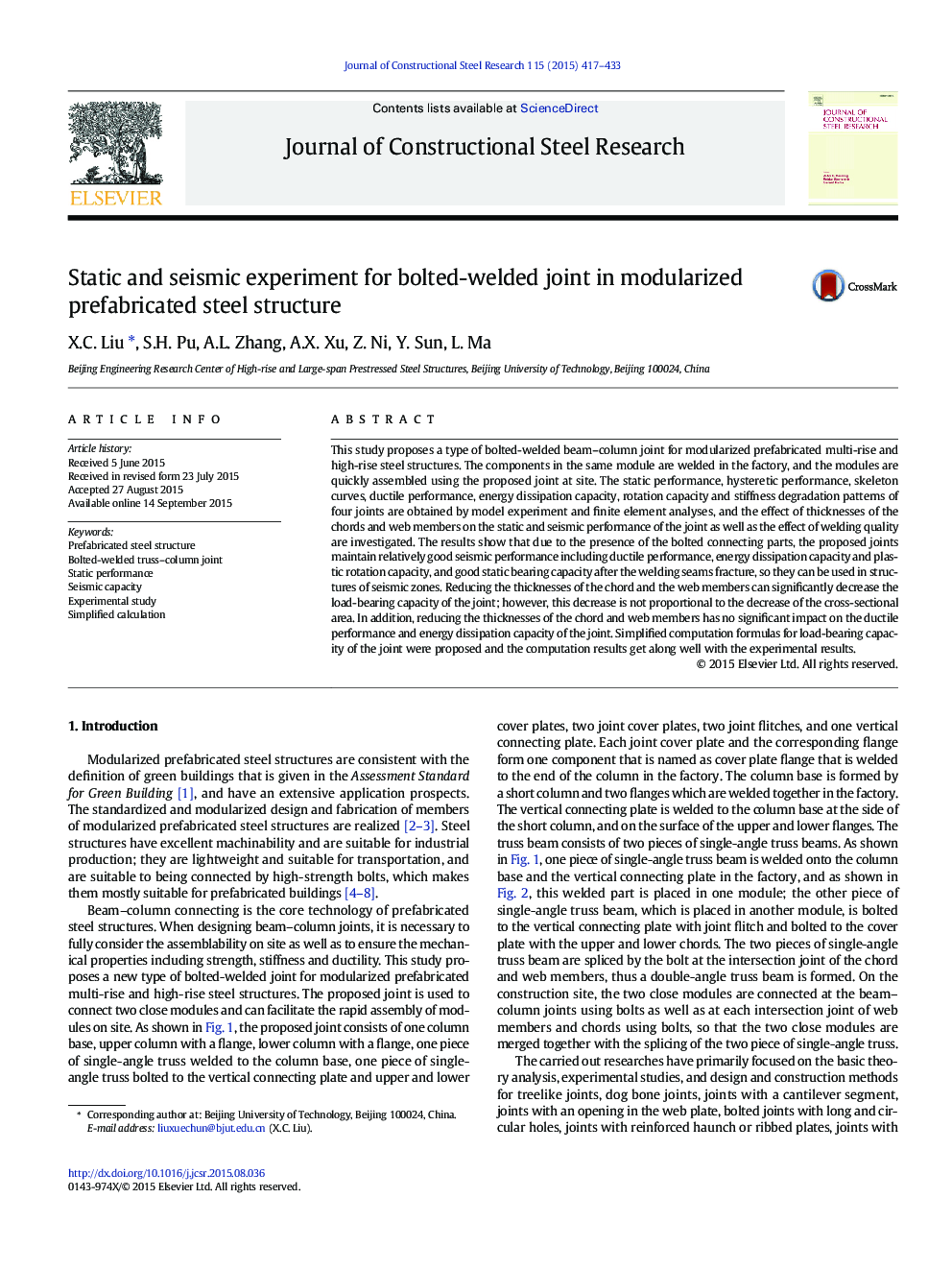| کد مقاله | کد نشریه | سال انتشار | مقاله انگلیسی | نسخه تمام متن |
|---|---|---|---|---|
| 284423 | 509145 | 2015 | 17 صفحه PDF | دانلود رایگان |
• A beam–column joint used in a modularized prefabricated steel structure is proposed.
• The static and seismic behavior were got by model tests and finite element analysis.
• The welding seams significantly affect the failure mode of the beam–column joint.
• The bolted connection prevented the beam–column joint from sudden failure.
• The bolted-welded beam–column joint exhibited good seismic behavior.
This study proposes a type of bolted-welded beam–column joint for modularized prefabricated multi-rise and high-rise steel structures. The components in the same module are welded in the factory, and the modules are quickly assembled using the proposed joint at site. The static performance, hysteretic performance, skeleton curves, ductile performance, energy dissipation capacity, rotation capacity and stiffness degradation patterns of four joints are obtained by model experiment and finite element analyses, and the effect of thicknesses of the chords and web members on the static and seismic performance of the joint as well as the effect of welding quality are investigated. The results show that due to the presence of the bolted connecting parts, the proposed joints maintain relatively good seismic performance including ductile performance, energy dissipation capacity and plastic rotation capacity, and good static bearing capacity after the welding seams fracture, so they can be used in structures of seismic zones. Reducing the thicknesses of the chord and the web members can significantly decrease the load-bearing capacity of the joint; however, this decrease is not proportional to the decrease of the cross-sectional area. In addition, reducing the thicknesses of the chord and web members has no significant impact on the ductile performance and energy dissipation capacity of the joint. Simplified computation formulas for load-bearing capacity of the joint were proposed and the computation results get along well with the experimental results.
Figure optionsDownload as PowerPoint slide
Journal: Journal of Constructional Steel Research - Volume 115, December 2015, Pages 417–433
